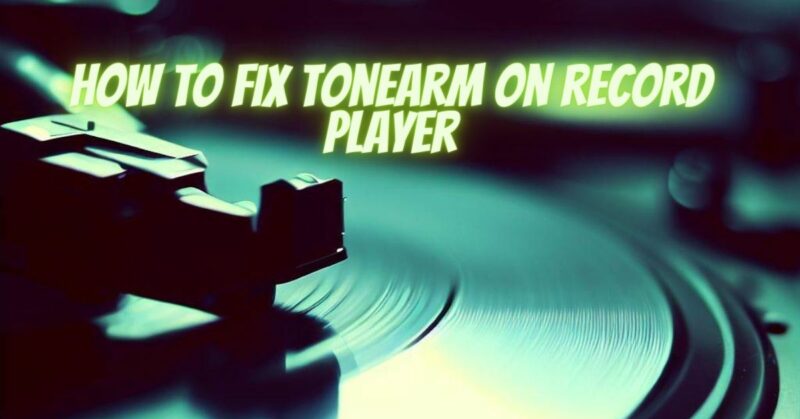The tonearm is a vital component of a record player, responsible for accurately tracking the grooves on your vinyl records. If you encounter issues with your tonearm, such as misalignment or skipping, it’s important to address them promptly to ensure optimal playback quality. In this step-by-step guide, we will walk you through the process of fixing a tonearm on a record player, helping you troubleshoot and resolve common problems.
Note: The specific steps may vary depending on the make and model of your record player. Always consult your user manual for manufacturer-specific instructions.
- Identify the Issue: Before attempting any fixes, identify the specific issue with your tonearm. Common problems include misalignment, skipping, excessive weight, or poor tracking. Understanding the problem will help you determine the appropriate course of action.
- Check the Tracking Force: The tracking force refers to the amount of weight applied by the stylus on the record. Incorrect tracking force can cause skipping or distortion. Consult your user manual or cartridge specifications to determine the recommended tracking force range. Use a stylus tracking force gauge or a digital scale to measure and adjust the tracking force accordingly.
- Check the Anti-Skate Setting: The anti-skate setting helps counteract the inward force on the stylus caused by the record groove. Incorrect anti-skate adjustment can lead to misalignment and skipping. Locate the anti-skate adjustment mechanism, typically a dial or knob near the tonearm base. Set it to the recommended value, usually matching the tracking force or slightly lower. Test the tonearm’s movement and adjust as needed for smooth tracking.
- Ensure Proper Tonearm Alignment: Misaligned tonearms can result in skipping or poor tracking. Use a protractor alignment tool or a printed alignment template specific to your turntable to verify and adjust the tonearm alignment. Follow the instructions provided with the alignment tool to achieve accurate alignment, ensuring the stylus is perpendicular to the record grooves.
- Clean the Stylus and Records: Dust, debris, and residue on the stylus or records can interfere with the tonearm’s performance. Gently clean the stylus using a stylus brush or a specialized cleaning solution, following the manufacturer’s instructions. Additionally, clean your records regularly to minimize dust and dirt buildup, which can affect playback quality.
- Inspect the Tonearm Lift Mechanism: If the tonearm lift mechanism is not functioning properly, it may cause the tonearm to drop abruptly or not lift at all. Carefully examine the lift mechanism for any signs of damage, obstruction, or misalignment. Clean the mechanism and ensure it moves smoothly. If necessary, consult the user manual or seek professional assistance for repair or replacement.
- Seek Professional Help, if Needed: If you have followed the above steps and are still experiencing issues with your tonearm, it may be best to consult a professional technician. They have the expertise and specialized tools to diagnose and resolve more complex problems.
Conclusion:
Fixing a tonearm on a record player requires careful attention to detail and a systematic approach. By checking the tracking force, adjusting the anti-skate setting, aligning the tonearm, cleaning the stylus and records, and inspecting the lift mechanism, you can often address common tonearm issues. Remember to consult your user manual for specific instructions related to your turntable model. In cases where the problem persists or appears more complex, seeking professional assistance is recommended to ensure optimal playback performance and enjoyment of your vinyl collection.

